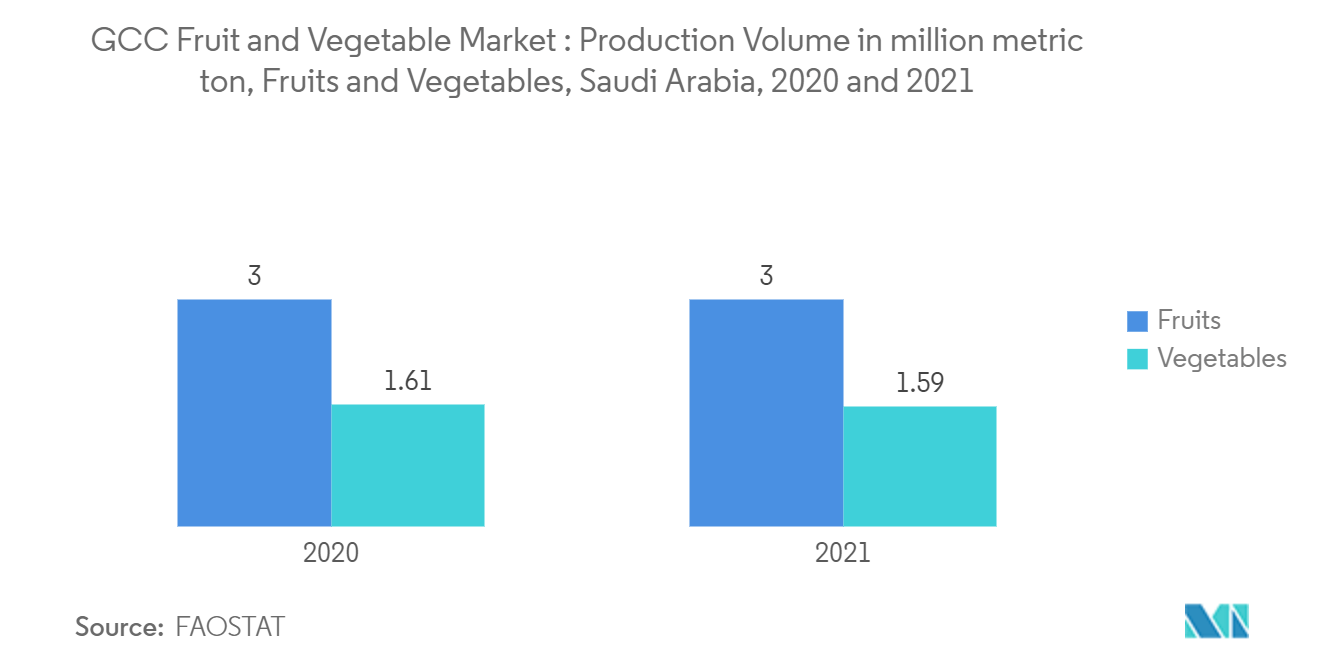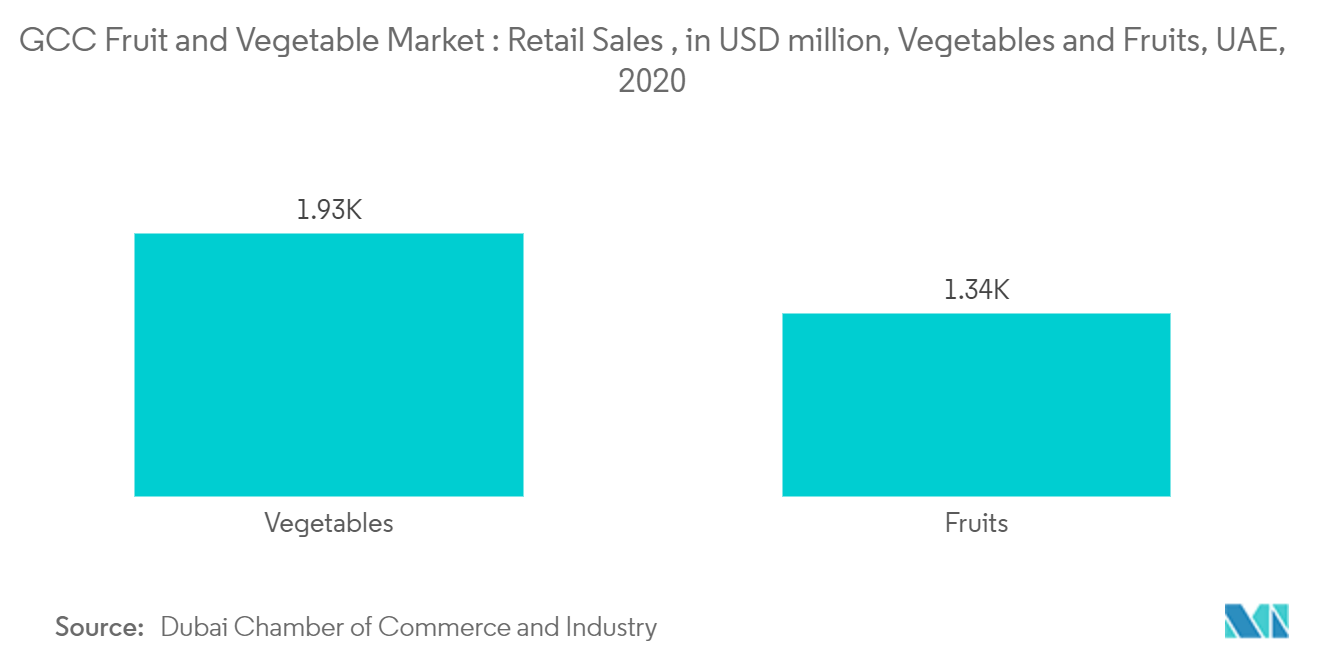Market Trends of GCC Fruits and Vegetables Industry
This section covers the major market trends shaping the GCC Fruits & Vegetables Market according to our research experts:
Increased Demand for Fruits
Higher disposable incomes tend to shift consumers from a carbohydrate-based staple diet to a nutrition-rich one. The rising level of education and health awareness among a significant population is leading to more fruit and vegetable-inclusive diets. Due to the increasing awareness regarding health issues, consumers from powerful countries in GCC, such as Saudi Arabia and the United Arab Emirates, etc., prefer healthier and more nutritious food containing high-quality nutrition, which in turn is driving the production in these countries.
Additionally, favorable government policies toward boosting production and increasing consumption support the market's growth. For instance, in 2021, Saudi Arabia's Ministry of Environment, Water, and Agriculture launched a new initiative to support local production, quality control, and ensure food security for fruits and vegetables in the nation. This is achieved by issuing import licenses for the fruit and vegetable suppliers. Moreover, among all the GCC countries, Saudi Arabia, Oman, United Arab Emirates, and Kuwait were the primary producers of fruits. The initiative is increasing local production to cater to domestic demand. For instance, according to FAO statistics, the total fruit production accounted for 3 million metric tons in Saudi Arabia in 2021, which stood steady from 3 million metric tons in 2020. In contrast, vegetable production accounted for 1.61 million metric tons in 2020, which showed slight decrease from 1.59 metric tons in 2020.
Furthermore, despite the unstable climatic conditions in the GCC countries, smart farming practices, like hydroponics, have served as a vital alternative to traditional farming in most countries, such as Saudi Arabia, the United Arab Emirates, and Kuwait. Important fruits and vegetable crops such as cucumbers, tomatoes, peppers, strawberries, chilies, aubergines, leafy vegetables, and herbs are grown using smart farming techniques. This increase in the adoption of new farming technologies is primarily attributed to a reduction in the dependence on imports and an increase in production, resulting in significant market growth.

Increased Accessibility Due to Presence of Well-developed Retail Chain
The local distribution and retail network has flourished rapidly in the major parts of the GCC, especially in Saudi Arabia, United Arab Emirates among others, in the past few years. Most of the fruits and vegetables demand in the country is met through imports from other countries, hence the distribution channel is very strong. Supermarkets and hypermarkets have been propping up, and with their superior distribution channel and in-store equipment, the shelf-life of fresh produce has increased, thus enabling greater consumption of fresh produce among consumers which is aiding the fruits and vegetable market.
The majority of the consumption of fresh produce in the countries is accounted for through supermarkets and hypermarkets. Hence, the distribution of fruits and vegetables is better facilitated through partnerships with local supermarkets and hypermarket chains, like LuLu Group, LVMH, Fu-Com, and others. The leading retail chains in the region are Union Coop, Carrefour, Geant Hypermarket, Lulu Hypermarket, and others. The retail store market in the country is consolidated, and the high market share of these outlets is due to the promotional offers given to customers. Although only a few companies have major markets, small new retail and independent supermarket stores are growing at a faster rate.
Moreover, the leading countries in GCC like Dubai has several free trade zones, including Jebel Ali, the largest cargo port in the Middle East, to support the trading. This expanded and well-developed trade network has facilitated the consumption and retail sector of fruits and vegetables. For instance, according to Dubai Chamber of Commerce and Industry, in 2020, the retail sales value of vegetables and fruits in UAE stood at USD 1,939 million and USD 1,344 million respectively. This retail sector sales of fruits and vegetables is high compared to other fresh food sales which contribute to the growth of the fruits and vegeatbles market in GCC countries.

